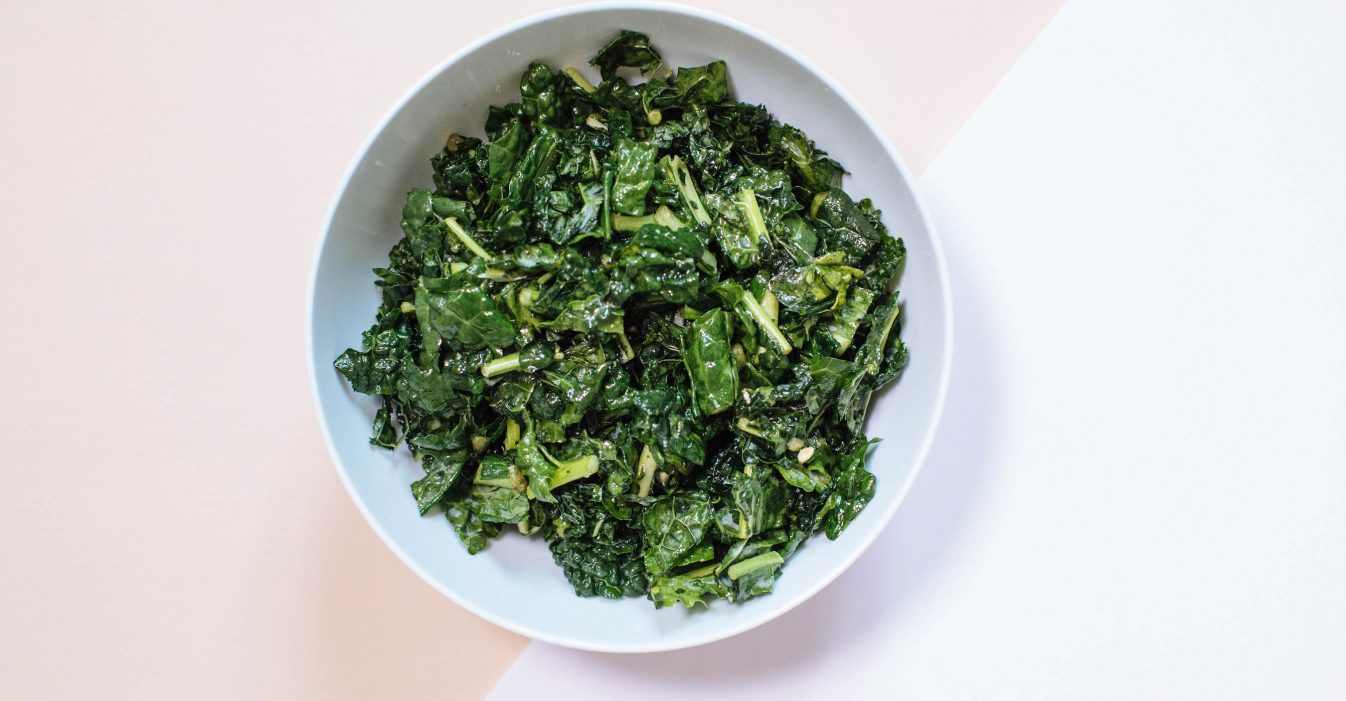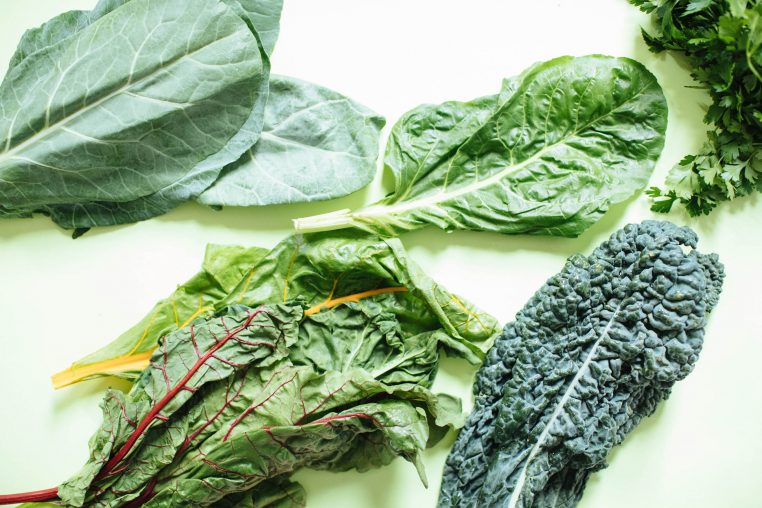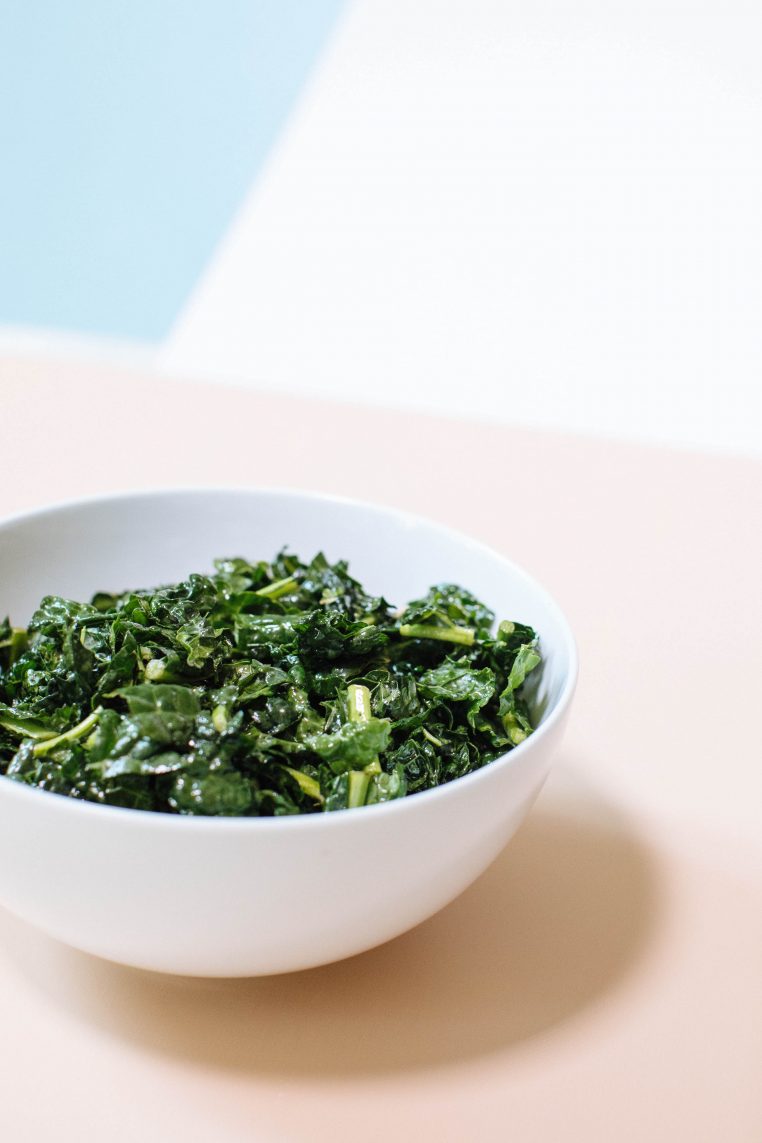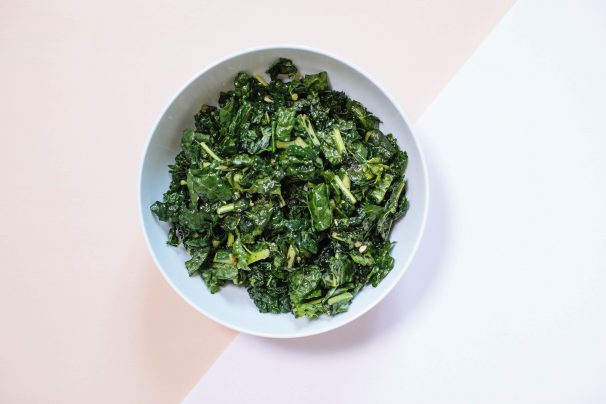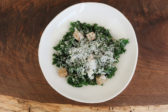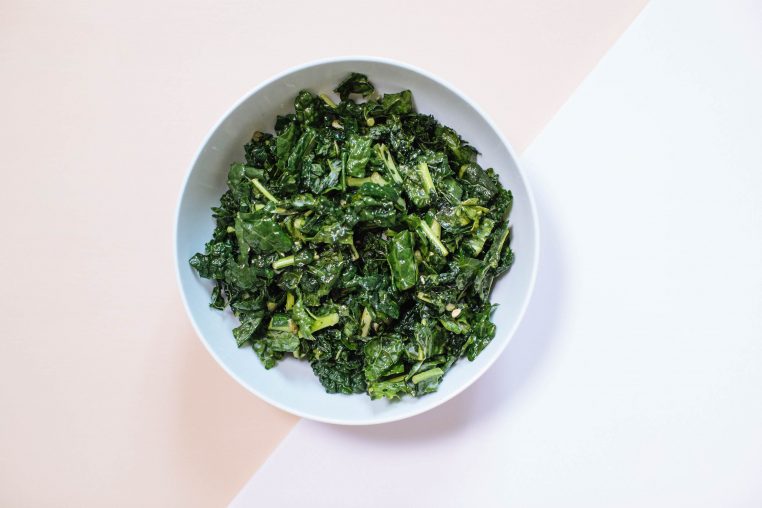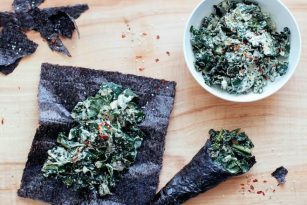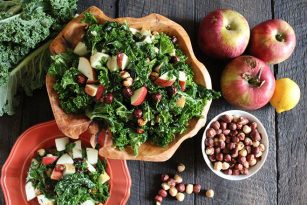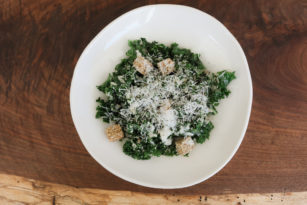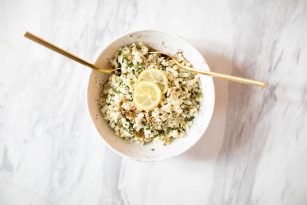A super simple and nutrient-dense salad requries massaging kale. Yes, massaging.
Looking for a way to increase the greens in your diet? Try out this hearty green, kale! Massaged Kale Salad is can be a delicious and simple way to enjoy raw kale.
Kale is rich in fiber, nutrients, and antioxidants and is incredibly satisfying from the king green itself, kale. This recipe is super simple, made from only very few clean ingredients. But what does it mean when it’s “massaged?” Read on for what I mean, plus how to make this delicious (and nutrient-packed) meal.
What’s a Massaged Kale Salad?
Kale is a fantastic leafy green, because of its texture which lends to a variety of ways to work with it. Kale is great for steaming, sauteing, adding to soups or stews for a more hearty mouthfeel, finely chopping and adding to a salad, or of course enjoying it blended in a green smoothie.
For this salad, massaging is a process of physically breaking down the kale to make it easier to digest for some people.
Digestion starts in your mouth, and kale has a very rough texture which takes a lot of mastication (chewing) before we can swallow it. Massaging prior to eating is like pre-digesting the kale. All you have to do is give your kale some love by using your hands.
The kale will visually change before your eyes while massaging. It will start to wilt which is due to the cellulose (plant fibrous structure that holds it together). It will become more vibrant green and softer in texture as well.
Because of its tough texture, another wonderful quality of kale is that it will stay in the refrigerator for a good week even after massaging. Unlike other more delicate leafy greens which tend to wilt and become soggy after chopping or physically “breaking” down, kale will keep it’s soft but chewy texture without becoming mushy.
The Benefits of a Kale
Kale touts antioxidants, anti-inflammatory benefits, cancer-protective compounds, cholesterol-lowering properties, as well as flavonoids which ward off inflammation and oxidative stress and support the body’s detoxification system. The ability of kale to lower cholesterol is due to its fiber content.
When steamed, the fiber can actually bind to the bile acids which are then excreted from the body. Kale is part of the cruciferous vegetable family which has been studied in relation to their protective compounds in cancer development (including colon, breast, bladder, prostate, and ovarian types) mainly due to the anti-cancer nutrients glucosinolates.
Glucosinolates are basically a chemical compound containing sulfur and nitrogen. It’s easy to relate this compound to the cruciferous veggie family, as most of these vegetables have a sulfur smell which is also responsible for the bitter taste you get when you eat broccoli, cauliflower, and brussels sprouts (my fave).
Isothiocyanates (ITC) made from glucosinolates also kick-start Phase I and Phase II enzymes, which are needed for detoxification, hence the advantage of cruciferous vegetables like kale in the role of detoxification.
Kale and Thyroid Function
When eaten in very large quantities and in their raw form, cruciferous veggies like kale may impair thyroid function. If you’re someone who suffers from thyroid dysfunction or hypothyroidism, it’s best to keep the cruciferous veggies limited in your diet when they’re in their raw state (aka uncooked).
You can, however, cook or steam to inhibit the thyroid compound found in kale that may interfere with thyroid hormone synthesis, which is very important for the overall health and function of your thyroid.
People who have no issues with their thyroid should still play it safe with limiting such large quantities (I’m talking in smoothies, juices, salads, and in snacks all day, every day), but most healthy individuals are perfectly fine to munch on cruciferous veggies throughout the day.
Most of the time I enjoy this as the base of a salad, but if you’re new to kale simply try adding a handful into your other favorite mixed greens to boost the nutrient content and then gradually have this salad as the base to add upon. I typically will make a large batch of kale salad to last me a good week and it keeps very well in a large airtight glass container!

